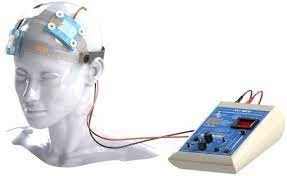Characteristics of Savant Syndrome
Individuals with savant syndrome are characterized by remarkable abilities in specific categories, such as music, memory, or art. Although, some form of brain dysfunction, such as autism, is seen as well in savants. The most interesting aspect of savant syndrome is that the skill found in these individuals often highly exceeds their intellectual or developmental functioning (Hughes et al., 2018). Savant syndrome is seen most often in those who fall on the autistic spectrum. Around 1 in 10 autistic individuals show savant skill, while 50% of savants have some level of autism. Level of savant skill also displays a spectrum:
- Splinter skills are those that include obsession with, and memorization of, various things such as numbers or trivia.
- Talented savants display more prominent skills, usually in a single area of expertise. Although, these are usually not as remarkable as some, but still remain remarkable in comparison to disability.
- Prodigious savants are those with beyond exceptional skill, whose abilities would be extraordinary even in a neurotypical individual.
These skills are also most often narrowed down to a specific set of categories:
- Music (primarily piano, composition and perfect pitch)
- Art (drawing, painting, or sculpting)
- Calendar Calculating (ability to name any day or date of any year)
- Mathematics (lightning calculation)
- Mechanical or Spatial Skill (construct complex models, measure precise distances without a ruler) (Treffert, 2009)

Along with this, such skills are always accompanied by a remarkable memory. Exquisite memory of savants often lies within the confines of their respective skill, but is very profound (Treffert, 2009).
Do All Savants Have Autism?
Although it is widely thought that savant syndrome arises solely from autistic individuals, this is not the case. Savant skills may appear in neurotypical individuals at any stage in life following brain injury or disease (Treffert, 2009). Most commonly, savant skills tend to arise after brain damage to the left hemisphere. It was proposed by Treffert (1989) that the right hemisphere exhibits compensatory effects after left hemisphere damage. This compensation may then result in reliance on procedural memory and display of obsessive behavior seen in savants (Heaton and Wallace, 2004). There have been several reports throughout history of individuals experiencing bouts of brain trauma, only to wake with newfound ability:
- 1923 – extraordinary musical abilities in a three-year-old following meningitis
- 1978 – Orlando Serrell exhibits remarkable calendar calculations after severe concussion
- 1980 – outstanding mechanical skills in nine-year-old boy following bullet to left brain
- 2010 – Jason Padgett becomes renowned mathematician after severe concussion
‘Acquired’ savants (those with savant skill obtained later in life through trauma) are much rarer than those born with such skill. Although, it has shown to be possible through a series of cases (Treffert, 2014). One of the most famous cases of savant syndrome is that of Kim Peek, popularized through the movie Rain Man (1988). Kim Peek was born without a corpus callosum, primarily resulting in remarkable enhancement of memory.

Finding the Inner Savant
Due to the ability of savant syndrome to arise later in one’s life, it has been questioned whether or not a neurotypical individual may be able to unleash their “inner savant.” One method has been used to quiet activity in the left hemisphere using noninvasive brain stimulation. This is due to previous research that decrease of
activity in the left hemisphere, and therefore an overactive right hemisphere, may result in savant-like skill. Transcranial magnetic stimulation (TMS) utilizes a powerful magnet to disrupt neuronal function in a specific region. TMS has shown enhance several skills in human such as art and music. Transcranial direct-current stimulation (tDCS) places a cathode and anode over the left and right hemispheres, respectively. This decreases the firing rate in the left hemisphere, while increasing it in the right. This increase in right hemisphere activity enhanced savant-like abilities in humans (Snyder, 2012). In regard to signaling, It has been shown that upregulation of the PI3K-Akt/mTOR signaling pathway is found in autistic patients, which is likewise for autistic savants (Sharma and Mehan, 2021). Although, it is unlikely that this pathway is the signaling mechanism involved in the rise of savant skill itself. It is questioned whether or not one must be born with the ability for savant-level skill, or if it can simply be acquired through right brain stimulation and molecular manipulation. Beyond what we know about savant syndrome, the molecular underlying of their remarkable talent is still yet to be discovered.
References
Hughes, J.E.A., Ward, J., Gruffydd, E. et al. Savant syndrome has a distinct psychological profile in autism. Molecular Autism 9, 53 (2018). https://doi.org/10.1186/s13229-018-0237-1
Treffert D. A. (2009). The savant syndrome: an extraordinary condition. A synopsis: past, present, future. Philosophical Transactions of the Royal Society of London. Series B, Biological Sciences, 364 (1522), 1351–1357. https://doi.org/10.1098/rstb.2008.0326
Treffort D.A. (2014). Accidental Genius. Scientific American, 311 (2).
Sharma A, Mehan S. Targeting PI3K-AKT/mTOR signaling in the prevention of autism. Neurochemistry International. 2021;147:105067. doi:10.1016/j.neuint.2021.105067
Snyder, A.W., Ellwood, S., Chi, R.P. (2012). SWITCHING ON CREATIVITY. Scientific American Mind, 23 (5).
